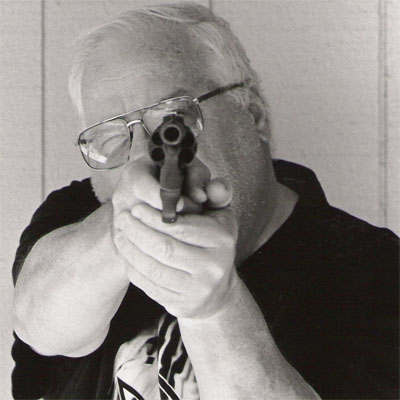I spent the five happiest years of my life in a morgue. As a forensic scientist in the Cleveland coroner’s office I analyzed gunshot residue on hands and clothing, hairs, fibers, paint, glass, DNA, blood and many other forms of trace evidence, as well as crime scenes. Now I'm a certified latent print examiner and CSI for a police department in Florida. I also write a series of forensic suspense novels, turning the day job into fiction. My books have been translated into six languages.
Being 'on call' and knowing you can be interrupted at any moment of the day and have to go to a crime scene, even if it's the middle of the night or a holiday. I've also had to change vacations because I have to testify in a trial. I hate that.
A forensic lab wouldn't examine a hyoid bone. That would be done at the autopsy by the pathologist. To the best of my knowledge there isn't anything else to examine, just whether it's broken or not, and as I said it doesn't conclusively prove anything one way or the other.Best of luck.
All the interesting, different, bizarre stories that make up the crimes that have happened that we have to investigate.
Send me your email address. If you don't want to post it here you can email me through my website: www.lisa-black@live.com.
Hotel Front Desk Agent
 Have you ever had a suicide occur in one of your rooms?
Have you ever had a suicide occur in one of your rooms?
Correctional Officer
 Why does gang formation and racial segregation happen so much in prisons?
Why does gang formation and racial segregation happen so much in prisons?
Day Trader
 What can a good day trader earn in a year?
What can a good day trader earn in a year?
A forensic scientist, forensic specialist, forensic technician can all be the same job or different jobs--your title is whatever your agency/boss says it is. There's no strict uniform code for titles. Usually any natural science is a good background for forensics. It may depend on whether you intend to work in a lab or on crime scenes. The best way is to look at job postings that interest you and see what the requirements are. You can view job postings on professional organizations' websites such as www.aafs.org or www.theiai.org. Good luck.
I'm not a DNA expert, but I know that half the 23 chromosomes in a person''s nuclear DNA come from one parent and half from the other parent, so part of the father's DNA would have to be present in the child.
Mitochondrial DNA (which is a different substance entirely, a circular structure present in the cell's mitochondria, whereas nuclear DNA is a double helix present in the cell nucleus) is passed from mother to child without recombining, so only the mother's mitochondrial DNA is present in the child. We test for mitochondrial DNA when nuclear DNA isn't available, like when we only have cut hair or fingernails or old bone to work with.
Sure, I'll email you. You might also want to look over earlier questions on this site.
-OR-
 Login with Facebook
Login with Facebook (max 20 characters - letters, numbers, and underscores only. Note that your username is private, and you have the option to choose an alias when asking questions or hosting a Q&A.)
(A valid e-mail address is required. Your e-mail will not be shared with anyone.)
(min 5 characters)
By checking this box, you acknowledge that you have read and agree to Jobstr.com’s Terms and Privacy Policy.
-OR-
 Register with Facebook
Register with Facebook(Don't worry: you'll be able to choose an alias when asking questions or hosting a Q&A.)